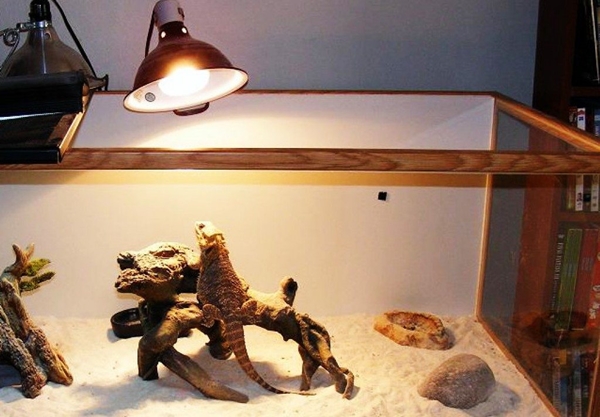The Complete Guide: How to Build a Vivarium for Your Bearded Dragon
Introduction
Bearded dragons are one of the most popular and beloved pets in the reptile community, and it’s not hard to see why. They are gentle, friendly, and easy to care for, making them an ideal choice for beginners. However, to provide your bearded dragon with a healthy and happy life, you need to create an environment that mimics their natural habitat. That’s where a vivarium comes in. In this guide, we’ll show you how to build a vivarium for your bearded dragon, step-by-step.
Step 1: Research and Planning
Before you start building your bearded dragon’s vivarium, the first step is to do some research and planning. You need to decide what size enclosure you need, what materials to use, and what features you want to include.
Size
Bearded dragons need a lot of space to move around and explore, so it’s essential to get the right size enclosure. As a general rule, the minimum size should be 4ft x 2ft x 2ft. However, if you can go bigger, then do it! Your bearded dragon will thank you.
Materials
When it comes to materials, you can use either wood or PVC. Wooden enclosures are cheaper, but they require sealing to prevent moisture damage. PVC is more expensive, but it’s lightweight, easy to clean, and doesn’t require any sealing.
Features
A good vivarium should have several features to keep your bearded dragon healthy and happy. Here are some of the essential features to include:
- Basking platform: A place where your bearded dragon can bask under a heat lamp.
- Hide boxes: A place for your bearded dragon to retreat to and feel safe.
- Substrate: A material that lines the bottom of the enclosure. Choose something non-toxic and easy to clean such as reptile carpet or paper towels.
- Lighting: UVB lighting is essential for your bearded dragon’s health.
- Thermometer and hygrometer: To monitor the temperature and humidity levels in the enclosure.
- Water bowl: A shallow bowl for drinking and soaking.
- Climbing accessories: Branches or rocks for your bearded dragon to climb on and explore.
Step 2: Building the Enclosure
Once you have done your research and planning, it’s time to build the enclosure. Here is a step-by-step guide:
Step 1: Cut the pieces
Using your chosen material, cut the pieces according to the size you want for your enclosure. Make sure to double-check your measurements to avoid any mistakes.

Step 2: Assembly
Once you’ve cut the pieces, it’s time to assemble the enclosure. Follow the instructions for your chosen material and use the appropriate tools to ensure a tight fit.
Step 3: Install the Features
Now that your enclosure is assembled, it’s time to install the features. Use the list from step 1 to ensure you don’t miss anything. Make sure to follow the instructions for each feature to ensure your bearded dragon’s safety and comfort.

Step 3: Decorating
Now that your enclosure is complete, it’s time to decorate it! This step is not only fun, but it’s also essential for your bearded dragon’s mental and physical health. Here are some tips for decorating:
Plants
Adding live plants to your bearded dragon’s enclosure can provide hiding spots, natural climbing branches, and improve the air quality. Choose plants that are non-toxic, easy to care for, and compatible with your bearded dragon’s environment.
Rocks and Branches
Rocks and branches provide natural perching and climbing opportunities for your bearded dragon. Choose rocks and branches that are smooth and won’t scratch your pet. Rinse them with water before adding them to the enclosure.
Step 4: Maintaining the Enclosure
Congratulations, you’ve built a vivarium for your bearded dragon! But the work doesn’t stop there. It’s crucial to maintain the enclosure to ensure your pet’s health and longevity. Here are some maintenance tips:
Cleaning
Remove uneaten food, feces, and shed skin daily. Once a week, clean the enclosure with a reptile-safe disinfectant and rinse thoroughly.
Temperature and Humidity
Ensure that the temperature and humidity levels are within the acceptable range for your bearded dragon. Use a thermometer and hygrometer to monitor the levels and adjust if necessary.
Lighting
Replace the UVB bulbs every six months and the heat bulbs every year.
Conclusion
Building a vivarium for your bearded dragon can be a fun and rewarding experience. By following the steps outlined in this guide, you can create an environment that mimics your pet’s natural habitat, ensuring its health and happiness. Remember to do your research, plan ahead, and maintain the enclosure regularly. Finally, enjoy watching your pet thrive in its new home!
